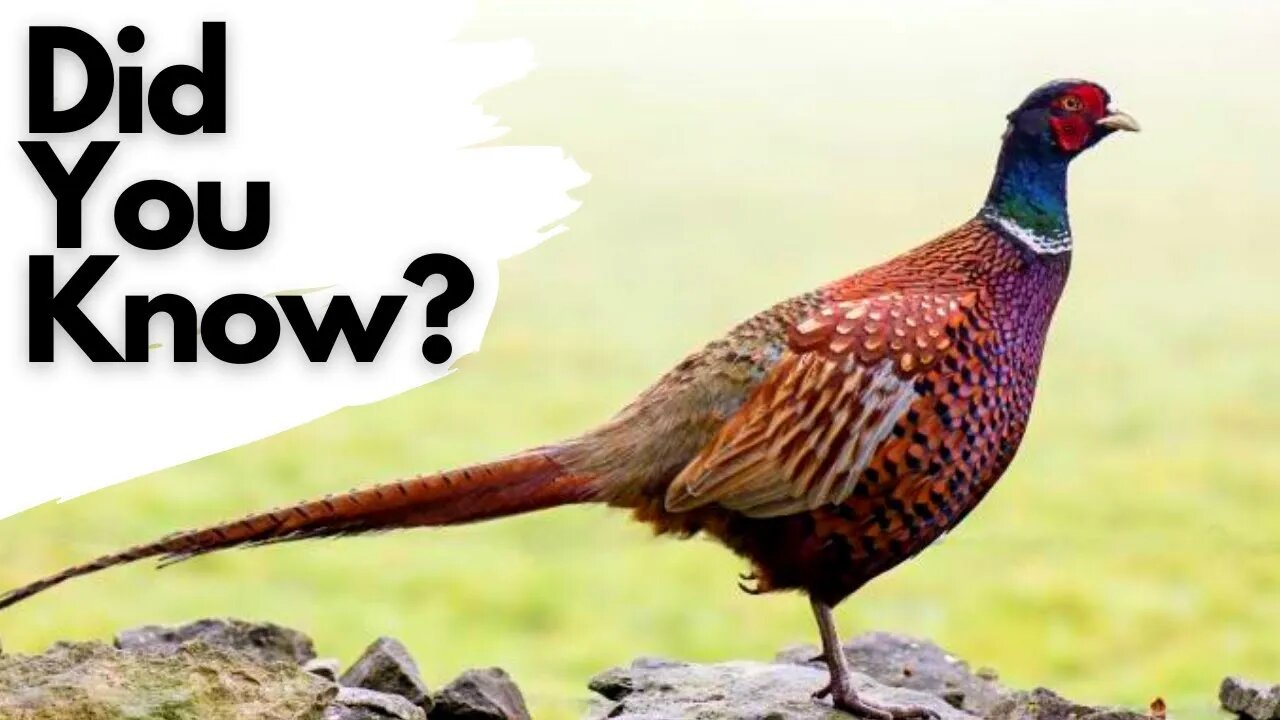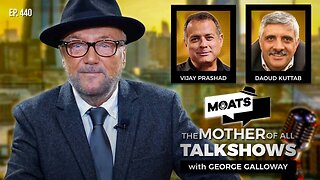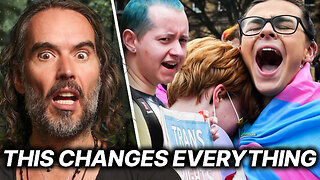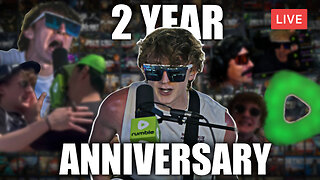Premium Only Content

Things you should know about PHEASANTS!
Have you ever wanted to know more about the common farmland bird, the Pheasant? Well if so, here is a video for you!
Ring necked pheasants are a large game bird that was introduced to the UK around the 11th century. They are native to China and east asia but have also been introduced to North America, mainland Europe, New Zealand and to some parts of Australia. Pheasants are sexually dimorphic, where the males and females look very different to one another. Females are mottled brown over their entire bodies and grow to between 750 to 1200 grams. Males are quite a bit larger at 1000 to 1750 grams and can be a variety of colours. The typical form is rich mottled chestnut and grey wings, with a glossy almost purple breast, a white neck band, green head and vibrant red patches of skin around each eye. Both males and females have very long tails which can make up more than half of their total body length.
Pheasants can roam into wetland and urban areas, sometimes even visiting gardens but their usual habitat is open countryside near to woodland edges and hedgerows. Their diet ranges from season to season but being opportunists they will eat everything from grains and seeds, to buds, roots and berries, insects and other invertebrates to lizards, snakes, frogs, and even small rodents.
Pheasants that survive over the winter months can and do nest in the UK. This happens between April and June when male pheasants, which are also known as cocks, compete with one another for the right to mate. The winners gather a harem of females which are known as hens and mate with all of them. The hens then create a well hidden nests on the ground, lined with grass and leaves. Each hen will lay between 6 and 15 olive or sometimes pale blue eggs in the nest. These measure around 4 and a half cm in length and it isn’t rare for more than one female to share a single nest creating a massive communal clutch. I cant find out if they share the incubation when they share a nest but only the hens incubate the developing eggs. They take 23 to 28 days to hatch and after just a few hours out of the egg, the chicks are up and about ready to move away from the nest. They can feed themselves straight away but they are flightless for the first 12 days. They will stay with their mother for 10 to 12 weeks before being fully independent. Pheasants will only nest once per year if they are successful at hatching their eggs, but if the eggs are destroyed, each hen can lay 2 or sometimes three clutches. As the male usually doesn’t play any part in rearing his chicks, he can have multiple mates throughout the nesting season.
As I mentioned in the beginning of this video, the vast majority of pheasants in the UK are captive bred ones that are released in the late summer for the shooting season. The breeding population here is between 3 and 4 million animals but each year between 45 and 50 million are released. To put this into perspective, if every native bird was weighed and compared with the weight of every pheasant in the UK in September, pheasants would outweigh natives 1.7times. Pheasants are able to fly short distances but when they sense danger they will usually run rather than take to the air. Pheasant can live to more than 18 years in captivity, but in the wild, they are lucky to make it to beyond 2 years of age. Here is a male pheasants call.
#pheasant #birdwatching #nature
Thanks to Fred from @WatchRWildlife for letting me use some of his footage in this video and thanks to @highworthbirder for letting me use his pheasant chick clip.
Some of the other videos and photos used in this video were obtained using creative commons license's. You can find the originals and their licence details here:
• Female Pheasant a...
• Pheasants fightin...
• white pheasant
• Female Pheasants ...
• Fasanenfamilie I ...
• Ring-necked Pheasant
• Fasan in freier W...
• Garden Spring, Ph...
• A pheasant at the...
• fazant in Natuurt...
• Resident Pheasant...
• Fasanenhähne und ...
https://www.flickr.com/photos/usfwsmi...
https://www.hippopx.com/en/nest-bird-...
https://www.geograph.org.uk/photo/395...
A Shot Of Wildlife
https://www.youtube.com/@AShotOfWildlife
Subscribe to my entertainment channel, I have a drone now and will be putting the videos on that channel since this one is shadow banned and demonetized!
There are over 8,000 videos here & far over 200 sources for videos, subscribe to see my top video choices plus the videos I make!
Please watch my videos all the way through, YouTube removed all the viewing hours I had when they killed my channel over fake strikes!
My Channels:
https://www.youtube.com/channel/UCT1G-ZnZOipV8kNAZYXymSg
https://www.youtube.com/channel/UCiNFsoytAuun90UzU5AuxXg
https://rumble.com/c/NewsTruth
https://odysee.com/@NewsTruth
https://www.bitchute.com/channel/kurtelliott
https://www.patreon.com/user?u=26453564 (Fixed)
https://www.subscribestar.com/kurt-elliott
-
 8:44
8:44
Kurt's News
3 months agoKimmel CRIES About Trump, Tapper Gets SCHOOLED on Pete Hegseth & Black Millionaire Claims Racism
84 -
 LIVE
LIVE
IsaiahLCarter
1 hour agoApostate Radio #011: The Revealing of Julie Behling
1,344 watching -
 2:08:20
2:08:20
George Galloway
13 hours agoRESURRECTION - MOATS with George Galloway - EP 440
44.2K57 -
 4:50
4:50
The Rubin Report
2 days agoDems Won’t Want to Hear Bill Maher’s Dark Prediction for the Democratic Party
89.1K101 -
 12:56
12:56
Russell Brand
3 days agoAbsolutely NO ONE Expected This To Happen....
113K263 -
 LIVE
LIVE
a12cat34dog
3 hours agoMY 2ND YEAR OF GAMING ON RUMBLE :: LIVE VIDEO PREMIER :: THE ULTIMATE MONTAGE {18+}
259 watching -
 2:22:25
2:22:25
Badlands Media
1 day agoDevolution Power Hour Ep. 347: Lab Leak Limited Hangout, Flynn’s Fury, and Trump’s 4D Chessboard
131K103 -
 LIVE
LIVE
Lofi Girl
2 years agolofi hip hop radio 📚 - beats to relax/study to
1,451 watching -
 1:50:51
1:50:51
Adam Carolla
5 days ago $16.78 earnedDave Portnoy RAILS against entitled, lazy Gen-Z Workforce + Comedian Dusty Slay | Adam Carolla Show
84K31 -
 12:10
12:10
Talk Nerdy Sports - The Ultimate Sports Betting Podcast
9 hours ago4/20/25 - Easter Sunday Special: Vas Resurrects the Slip & Buries the Books 🧾🔥
63.1K4